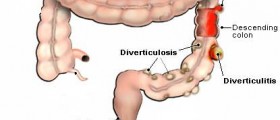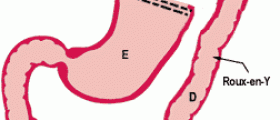Colorectal Surgery
Colorectal surgery is a procedure that is done to repair disorders in the rectum, anus, colon, and in rare cases pelvic floor. The conditions and disorders which can affect the colorectal tract include cancers, injuries, hemorrhoids, damage in the anus, obstruction of the passages, severe constipation, problems with fecal elimination, perforations, ulcers, rectal prolapse, and other diseases.
Procedures
In more severe colorectal disorders or damages, the surgical procedure requires making an opening in the abdominal wall through which the body waste is removed. Such surgery is called colostomy. The surgeon will take a part of the colon, pull it through the abdomen and insert a catheter. The opening on the abdomen is called a stoma. The waste from the catheter is gathered in the special pouch.

A similar procedure is an ileostomy. In this procedure, the colon is removed, and the opening is made in the small intestine. Both these procedures require pouches for body waste.
Another type of colorectal surgery is a laparoscopic procedure in which a surgeon slides a laparoscope through a tiny cut on the abdomen. The laparoscope has a camera at the end, so the surgeon can see in insides of the monitor. A few additional cuts are made for the medical instruments.
Outcome
Proper care after colostomy and ileostomy is very important because these procedures carry greater risks of complication. Hospitalization takes around three days, and the patient is released from the hospital for home treatment. You should also educate yourself about the adequate care of the pouch and the skin around the stomach.
You will also need to be on a special diet to avoid constipation or irritation of the intestines. As far as laparoscopic surgery is concerned the hospitalization is shorter, there are fewer scars and less pain, and the risk of complication is reduced.
Complications
Colorectal surgery carries certain risks. Within the first days after the surgery, you may be at risk of wound infection, bleeding, blood clots, pneumonia, and an allergic reaction to the anesthesia, which can lead to heart problems. Other complications which can appear later include fly symptoms such as fever, chills, pain in the muscles and headache, pain in the abdomen, constipation, sickness, vomiting, pain, redness or swelling of the wound, and drainage or bleeding from the stoma.
Further complications include problems with the stomach that includes necrosis of the tissue of the stoma, withdrawal of the stoma in the abdomen, protrusion of the stoma, narrowing of the opening, and hernia in the vicinity of the stoma.
- Open or laparoscopic colorectal surgery comprises of many different types of procedures for various diseases. Depending upon the operation and modifiable and non-modifiable risk factors the intra- and postoperative morbidity and mortality rate vary. In general, surgical complications can be divided into intraoperative and postoperative complications and usually occur while the patient is still in the hospital.
- A literature search (1980-2009) was carried out, using MEDLINE, PubMed and the Cochrane library.
- This review provides an overview how to identify and minimize intra- and postoperative complications. The improvement of different treatment strategies and technical inventions in the recent decade has been enormous. This is mainly attributable to the increase in the laparoscopic approach, which is now well accepted for many procedures. Training of the surgeon, hospital volume and learning curves are becoming increasingly more important to maximize patient safety, surgeon expertise and cost effectiveness. In addition, standardization of perioperative care is essential to minimize postoperative complications.
- The most frequent postoperative surgical complications after colorectal resections are surgical site infection, anastomotic leakage, intraabdominal abscess, ileus and bleeding. These complications have different influences on outcome and have to be diagnosed accurately.

















Your thoughts on this
Loading...